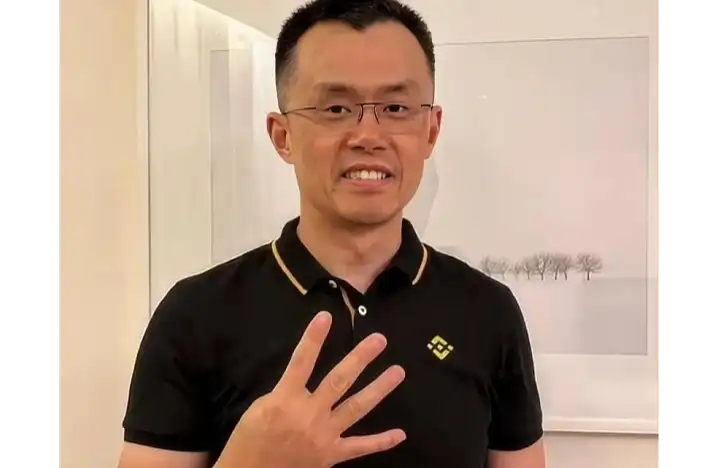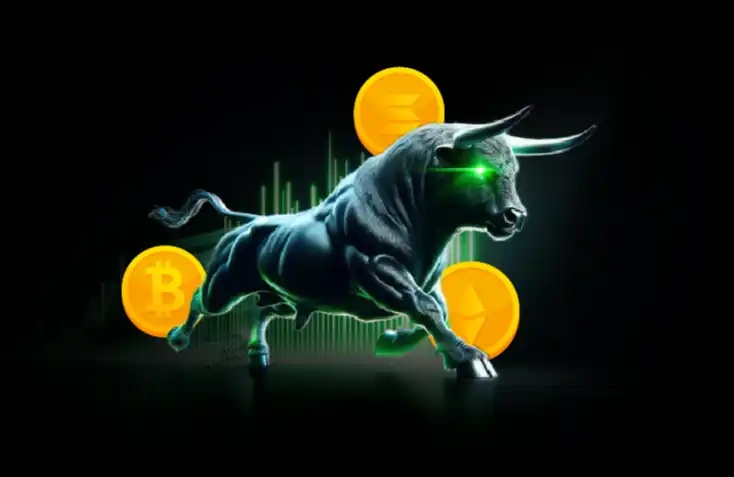Bitcoin Renaissance: Skeuomorphism and Retroism in the Digital World
Original source: TH Travel Notes of Countries
Original author: Tang Han
"With POW as time, UTXO/Cell as space, and energy as drive, we can get a world."
The Bitcoin Renaissance is a topic that everyone is talking about. Many project parties place themselves under this banner to explain their current behavior. At present, this wave refers more to the gathering of funds, consensus and developers to the Bitcoin ecosystem. But perhaps we can think more deeply about this wave: What exactly is it? What will it leave behind?
I think the Bitcoin Renaissance is the revival of two basic value propositions, one is POW, and the other is UTXO. The former is opposite to POS, and the latter is opposite to the account model, and the representative of the POS+Account model is Ethereum. This Bitcoin Renaissance will mean that after fifteen years of development, the blockchain industry is returning from the POS+Account route led by Ethereum to the POW+UTXO route led by Bitcoin.
But why is this so? What exactly are people tired of? When people return to Bitcoin, how is a possible world different from Ethereum? (Except that the disappearance of Satoshi Nakamoto has made Bitcoin a no-man's land.)
1. Skeuomorphism and Retroism
If you carefully read the white papers of Bitcoin and Ethereum, you will be able to feel how different these two systems are. In the summary of Bitcoin's white paper, Satoshi Nakamoto defines Bitcoin as "a completely peer-to-peer electronic currency." We can find a reference to Bitcoin in the real world: cash. The characteristic of cash is that it allows online payments to be sent directly from one party to another without going through a financial institution. This constitutes a kind of skeuomorphism. In the white paper of Ethereum, there is no such reference. We will talk about this later in the article.

One of the reasons why Satoshi Nakamoto invented Bitcoin was because this peer-to-peer electronic currency did not exist in the digital world, but was needed. It was when the 2008 financial crisis swept the world, many banks collapsed, and people could not withdraw their money from the bank. Therefore, although bank transfers provide a way to pay digitally, relying on a third party makes everyone realize that this is not actually my money, I just hold the status balance in the bank's ledger. Real "electronic cash" does not exist, let alone the fact that I hold "electronic cash".
Satoshi Nakamoto did one thing: he successfully realized the digital simulation of real cash. How was this simulation achieved? He used POW, or proof of work, as the basis to provide security support for electronic cash (in fact, the role played by POW may be far beyond this). POW ultimately attributes the security of the system to the computing power and energy of the real world. He used UTXO as a carrier to simulate the body of cash and store the money belonging to the user in UTXO. The ownership relationship is solved by the "lock" of the private key.
Bitcoin's simulation of electronic cash is very successful. POW unifies the security of the digital world and the security foundation of the real world, both of which are built on energy; while UTXO provides an independent and non-interfering digital body. The combination of the two has shaped a deep tendency to imitate the real world in the digital world. If Ethereum is called radicalism, perhaps this kind of digital world simulation can be called a kind of retroism.
Second, why retro to reality?
This retro-ism implies the insight that there is a deeper wisdom behind the real world that is worth learning from the digital world. This insight is often forgotten because people create digital worlds to transcend reality. But we can still understand this point through a few examples:
· You have an item in a game, such as a golden sword. However, due to a shortage of funds, the game developer shut down the server a year later, and the golden sword disappeared. Imagine that in real life, could the golden sword you hold suddenly disappear?
· Vitalik used to love the warlock character in Blizzard's game. One day Blizzard suddenly decided to cancel the life siphon skill, which made him cry and embark on the road of resisting centralized Internet platforms. Imagine that in real life, a group of talented people could suddenly have their skills drained by another company executive?
· A blog site you love has been ordered to shut down. Even the entire site can no longer find any trace of it. Two years later, even the trace of this person can no longer be found on the Internet. In real life, can a book just disappear? ...
We can imagine a digital world that is crazy and far away from the tendency of skeuomorphism: a news site that can 404 at any time. A cup that cannot be held. A game character whose ability can be cancelled at any time. You will feel that something is wrong, but what is wrong?

The answer is: it makes us live in a fragile, flattering (a high-level control method) control system that is highly inconsistent with real ethics. The digital objects in this system have simulacra but no solid existence, or they cannot be free and must rely on a third-party platform to exist. However, we project a lot of emotions, time and trust on these simulacra. The emotions we project eventually become bargaining chips controlled by the platform.
People love instinctively, including love and trust even digital objects that are not free and designed by people. When love is used and manipulated in batches and systematically, we lose the sense of reality of life.
Reality implies a certain solidity, which is the foundation for the birth of ethics and morality (privacy, human rights, freedom, responsibility, and sublimity). This may be the reason why the digital world is retro to reality.
3. Representation of Bitcoin’s skeuomorphism tendency
Let’s go back to Bitcoin. In the Bitcoin ecosystem, we can see a strong tendency towards skeuomorphism. Bitcoin is simulating electronic cash, and Bitcoin developers have also found different objects in the real world that inspired them to simulate it. Here are some cases for your reference:
Bitcoin: electronic cash
Lock: lock, later extended to a one-time seal by Peter Todd
RGB protocol: Scottish title deeds (commitments are only stored on Bitcoin)
Ordinals protocol: dyed satoshis (serial numbers)
Atomical protocol: digital material theory
Runes: Bitcoin as a slate
KeyChat: stamps, envelopes
CKB, which follows the design ideas of Bitcoin: cells (the basic unit of data in CKB)
Spore Dob protocol: DNA and interpreters can be built into cells
Each of these cases can be discussed for a long time, so I don’t intend to expand on the details of these cases one by one in this article. What I want to share is: Although the structure of Bitcoin is very simple, different developers seem to be able to find different perspectives in this simple structure to construct their world. Just like a tree, some people like the leaves of the tree, because the leaves are soft, so they use them to weave wreaths; some people like the branches of the tree, and use them to build houses; some people like the bark of the tree, and use it to burn fires for warmth. Some people are inspired by the tree and plant a forest.
This is because once an object appears, the understanding must be diverse. Different people look at Bitcoin from different perspectives, and eventually get different Bitcoins, and different Bitcoins overlap on the chain called Bitcoin that we see today, forming the world's largest consensus.
However, it seems difficult for us to see this on Ethereum.
Fourth, Ethereum is not skeuomorphic
If you look through the white paper of Ethereum, you will not see the skeuomorphic tendency like Bitcoin. At the beginning, Ethereum was function-oriented. It did not have objects to simulate in reality. It appeared to facilitate developers to develop on-chain applications. Ethereum has been tied to the four words "smart contract" from beginning to end.

But I want to say that in real life, beings can never be function-oriented. Existence must first exist, and then be understood and explored in practice for different functions. It's like a tree. A tree never exists to be your firewood, it just exists there silently. As long as the energy is not exhausted and its life is not over, it can continue to exist. It's only in the process of your interaction with it that you find that it can have various functions.
POS fails to give the assets on Ethereum an energy basis that is isomorphic to reality. Although people have gone through countless debates on the issue of which is safer, POS or POW, and supporters of both sides have found their own angles that can make them feel at ease, in the matter of simulacrum, POS and POW have already run into two worlds. The world of POS is a more human-ruled world; while the world of POW attempts to achieve a unified cost structure between the digital world and the real world, that is, in order for the existence of the existence, the energy cost must be paid.
In reality, existence is never flattering or easy, but laborious. Existence is facing entropy increase all the time. Think about it, if you don't clean your house for a week, it may be covered with dust. Maybe you don't want to sweep the floor yourself, but use a robot vacuum cleaner to clean the room, then you have to charge the robot vacuum cleaner. Another example: if you don't take in energy and don't eat, you as a living being will die. This is all very basic common sense.
It takes energy to make something exist to fight against entropy increase. This is inherited in the world built by POW. In order for the on-chain world to exist, the POW chain must consume energy continuously. POS supporters believe that this is not environmentally friendly and unnecessary from a security perspective. However, energy consumption simulates a cost structure similar to reality, which forms the basis for people to extend ethics to the digital space and confirm the reality of digital objects. I will discuss this in detail in another article.
Ethereum's account model is certainly conducive to more developers developing applications, however, this model naturally determines that Ethereum cannot be quasi-objective. It is more like a relational existence, that is, the existence of all things is stateful, and they need to find their own state and position in the world state tree. It cannot achieve the solidity and stability of UTXO. It is difficult for us to imagine that an apple in the real world may be affected by a cup thousands of miles away, but this is the case in the world of Ethereum, because there are no independent apples and cups there, there are only one state after another, but this state is not controlled by a third party. Contract attacks and asset theft are common events on Ethereum.
In other words, there is nothing in Ethereum.
To a certain extent, the existence of nothing limits the innovation of the Ethereum ecosystem to the leadership's update of the narrative. If there is something, people can explore its functions from different perspectives based on their observations of the thing and make it into different things. For example, Peter Todd found a one-time seal on Bitcoin; Casey found a slate engraved with history on Bitcoin. Although Satoshi Nakamoto really just wanted to build electronic cash at the beginning, you see, once the object exists, different perspectives can create it into different things. A tree can be used to build a house, as firewood, and for root carving...
Because nothing exists, the leadership of Ethereum must give a definition of what Ethereum is, especially to constantly give its functional direction. Since it is functional, it is necessary to continuously optimize this function, and what follows is more and more radical parameter improvements and functional integration... But doing so is easy to lose direction.
V. Back to NFT: Can digital objects replace you?
Let's answer the original question of the article: What changes will happen when we return to Bitcoin from Ethereum? What will be left of the Bitcoin Renaissance?
A very natural trend is to build a real full-chain digital object world, or an autonomous world, based on POW and UTXO.
Although some people in the Ethereum community have discussed full-chain games, under two completely different world technology architectures, the worlds that full-chain games point to are different. The most impressive words that Jan, the architect of CKB, said are: "With POW as time, UTXO/Cell as space, and energy as drive, we can get a world." POW+UTXO itself constitutes a simulation of the real world. This world has its own internal time and creates independent and mutually independent bodies for digital objects in the world. People can write content into the existing space body through the "Ghost in the Shell" mode to build digital objects. The POS chain does not have its own internal time, and there is no concept of independent objects like UTXO in the chain. The "objects" in it are more like a relational existence, which is essentially a state recorded on the global ledger.
On the POW+UTXO chain (not just Bitcoin), we can imagine such a digital object: in order to maintain its existence, this object needs energy like real objects, and consumes the same energy. We can also imagine such a relationship between the world and the object: construct a digital object, and when the world (that is, the blockchain) exists, the digital object exists from the material structure. Its existence is not subject to anyone's will. No one can destroy or change it. In this sense, the existence of the digital object is equivalent to the existence of the blockchain in terms of security and effectiveness.
We cannot imagine that the solidity of an NFT on Ethereum is equivalent to Ethereum itself. Under normal circumstances, NFT images exist outside the chain, and there is only a contract state on Ethereum that allows programming, not the object itself. Allowing developers to program as flexibly as possible was once a feature that Ethereum was very proud of. But when constructing an autonomous world, this human-centric tendency makes the relational existence in the world fragile and not solid.
NFT is the core of the explosion of the metaverse concept in the last bull market, and it is also the key factor in the explosion of the Ethereum ecosystem. It runs through the entire bull market. Whether it is crypto art, PFP small pictures, metaverse, GameFi, including the later DAO and SBT, they are actually inseparable from NFT. Unfortunately, developers on Ethereum tried to build chain games around NFT, but in the end they could only converge on GameFi; idealistic developers tried to develop full-chain games, and finally evolved into a set of design concepts called AW, but it was difficult to implement.
I believe that all this will start over in the Bitcoin ecosystem, but the path to realization, people's understanding, and the temperament presented in the end will be very different. Bitcoin's skeuomorphism and retroism will accompany developers. Good developers should not think about how to quickly move the existing world on Ethereum, but should think about how to build new rules and a new world on this solid land. This may be the biggest innovation in this round of bull market.
Original link
Welcome to join the official BlockBeats community:
Telegram Subscription Group: https://t.me/theblockbeats
Telegram Discussion Group: https://t.me/BlockBeats_App
Official Twitter Account: https://twitter.com/BlockBeatsAsia


 Forum
Forum Finance
Finance
 Specials
Specials
 On-chain Eco
On-chain Eco
 Entry
Entry
 Podcasts
Podcasts
 Activities
Activities
 OPRR
OPRR








